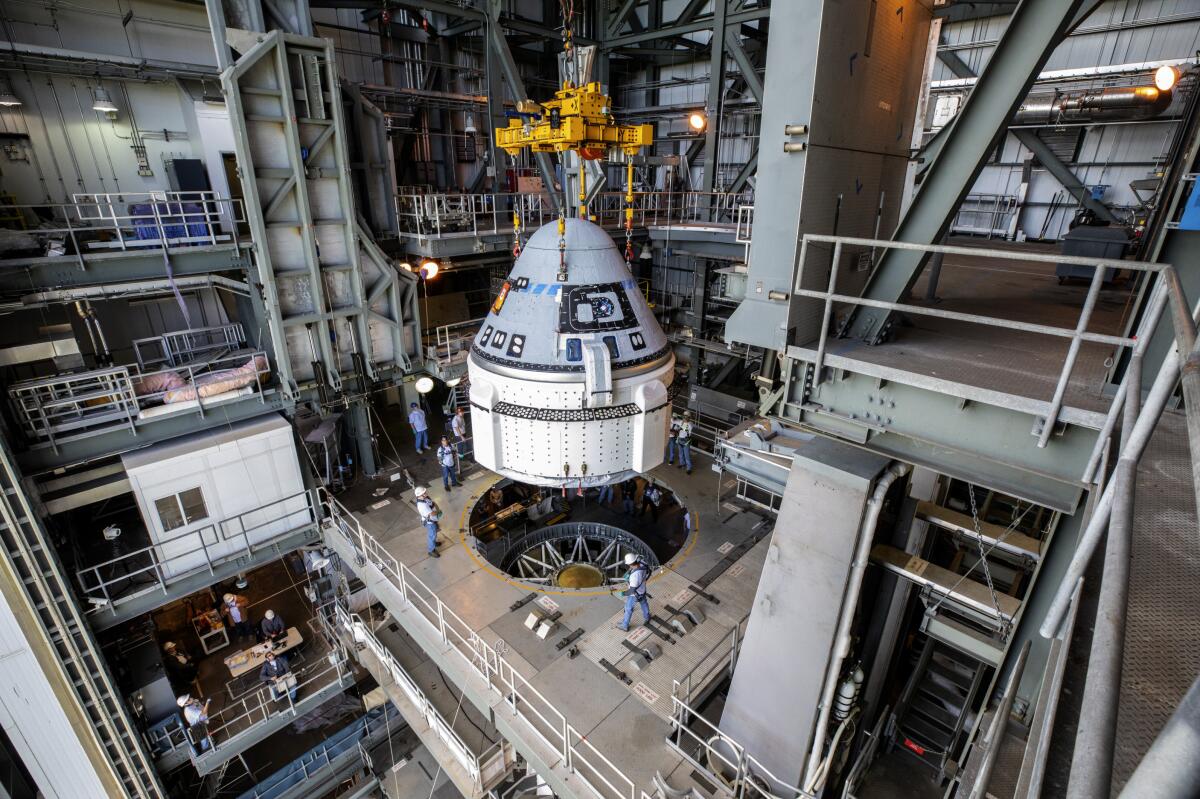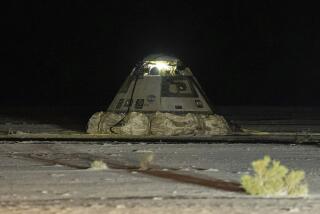NASA identifies Starliner problems but sets no date for astronautsâ return to Earth

After weeks of testing, NASA and Boeing officials said Thursday they have identified problems with the Starlinerâs propulsion system that have kept two astronauts at the International Space Station for seven weeks â but they didnât set a date to return them to Earth.
Ground testing conducted on thrusters that maneuver Boeingâs capsule in space found that Teflon used to control the flow of rocket propellant eroded under high heat conditions, while different seals that control helium gas showed bulging, they said.
The testing was conducted after the thrusters malfunctioned when Starliner docked with the space station on June 6 and a helium leak that was detected before launch worsened on the trip to the station. The helium pressurizes the propulsion system.
However, officials said the problems should not prevent astronauts Suni Williams and Butch Wilmore from returning to Earth aboard the Starliner capsule, which lifted off on its maiden human test flight June 5 for what was supposed to be an eight-day mission.
âI am very confident we have a good vehicle to bring the crew back with,â Mark Nappi, program manager of Boeingâs Commercial Crew Program, said at a news conference.
NASA and Boeing officials have said previously that the Starliner could transport the astronauts to Earth if there were an emergency aboard the space station, but they opted to conduct the ground tests to ensure a safe, planned return.
Decisions on whether and when to use Starliner or another vehicle will be made by NASA leaders after they are presented next week with all the information collected from the testing, which will include a âhot fireâ test of the engines of the Starliner docked at the space station, Nappi said.
Rigorous ground testing conducted at NASAâs White Sands Test Facility on a thruster identical to the ones on the Starliner found that, despite the issues with Teflon degradation, the thruster was able to perform the maneuvers that would be needed to return Starliner to Earth, said Steve Stich, program manager for NASAâs Commercial Crew Program.
Official also have said that the Starliner still has about 10 times more helium than is needed to bring the capsule back to Earth.
The problems that have cropped up have been an embarrassment for Boeing, which along with SpaceX was given a multibillion-dollar contract in 2014 to service the station with crew and cargo flights after the end of the space shuttle program. Since then, Elon Muskâs Hawthorne-based company has sent more than a half-dozen crews up, while Boeing is still in its testing phase â with the current flight delayed for weeks by the helium leak and other issues that arose even before the thrusters malfunctioned.
Should NASA make a decision not to bring the crew home on the Starliner â which could still return to Earth remotely â the astronauts could be retrieved by SpaceXâs Crew Dragon capsule, though SpaceXâs workhorse Falcon 9 rocket is currently grounded after a failure this month.
The Russian Soyuz spacecraft also services the station and carries American astronauts.
More to Read
Inside the business of entertainment
The Wide Shot brings you news, analysis and insights on everything from streaming wars to production â and what it all means for the future.
You may occasionally receive promotional content from the Los Angeles Times.











